Liposuction in Portland, OR
Refine Your Contours. Restore Proportion. Renew Your Confidence.
These areas often don’t respond to diet or exercise, leaving women frustrated. Liposuction with Dr. Hetal Fichadia offers a way to finally target these resistant pockets, restoring balance and proportion with results that look natural, elegant, and uniquely yours.
As a double board-certified female plastic surgeon in Portland, Dr. Fichadia combines surgical artistry with compassion. She uses power-assisted liposuction (PAL) for efficient, precise fat removal and often integrates Renuvion® skin tightening to enhance skin firmness—delivering smoother, more refined contours without unnecessary excisions.
Call (503) 488-2344 or request a consultation online to explore your personalized liposuction plan in Portland or Lake Oswego.
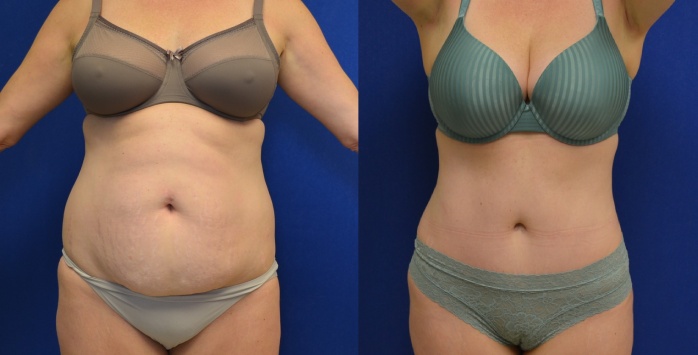
Quick Links
What Is Liposuction?
Liposuction is a body contouring procedure that permanently removes excess fat cells from targeted areas. It’s not designed for weight loss—it’s a sculpting tool best for women close to their healthy weight but struggling with localized fat that resists lifestyle changes.
Dr. Fichadia often combines liposuction with:
- Tummy Tuck (Abdominoplasty): For skin tightening and muscle repair
- Mommy Makeover: For comprehensive post-pregnancy rejuvenation
- Fat Grafting: Using your own purified fat to naturally enhance the breasts, buttocks, or face
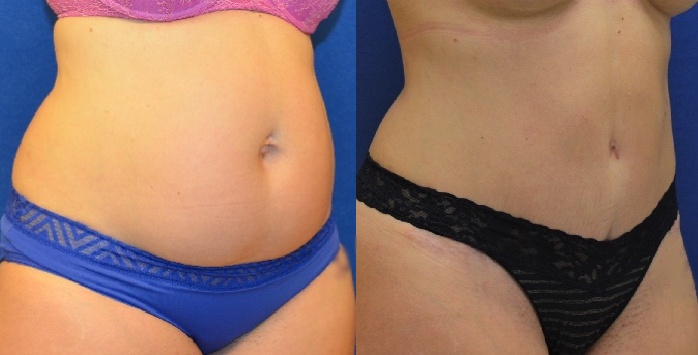

Why Choose Dr. Hetal Fichadia for Liposuction in Portland?
Liposuction is not just about fat removal—it’s about artful contouring and balanced results.
Dr. Fichadia brings:
- Double Board-Certified Expertise: Plastic and general surgery training
- Over a decade in private practice serving Portland women
- Advanced PAL technology for precision and efficiency
- Renuvion skin tightening for smoother results in the right candidates
- Holistic Care: From pre-op nutrition and readiness to long-term support
- Woman-to-Woman Insight: Deep understanding of body image and confidence through life’s stages
- Natural Results: Prioritizing proportion, balance, and subtle elegance
Grounded in honesty, education, and patient comfort, Dr. Fichadia’s care has earned her ongoing peer recognition as a Portland Monthly Top Doctor since 2018.
Benefits of Liposuction
The impact of liposuction is more than cosmetic—it’s about restoring confidence and harmony to your figure.
Key benefits include:
- Slimmer, smoother contours in resistant areas
- Permanent removal of fat cells
- Improved body proportions (waist-to-hip ratio, leg balance, etc.)
- Clothing and swimwear that fit more comfortably
- Option to combine with Renuvion skin tightening for firmer results
- Opportunity to repurpose fat for natural fat transfer
- A boost in self-image and body confidence
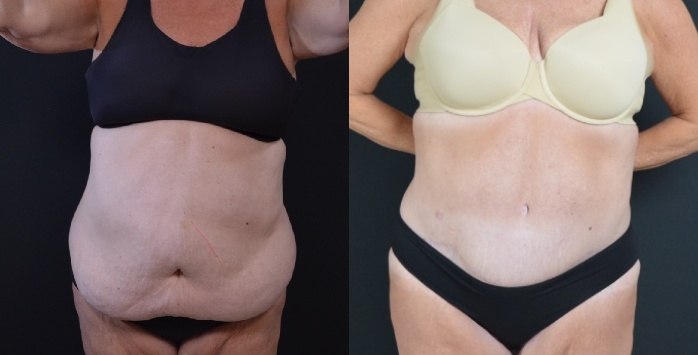
How Does Liposuction Work?
Small volume liposuction can be done in the office – also known as awake liposuction with numbing medicine. Dr. Fichadia performs power-assisted liposuction (PAL), a technique that uses rapid, gentle cannula vibrations to loosen fat before removal. This allows for:
- Greater precision
- Reduced trauma to surrounding tissues
- Smoother contouring
Procedure steps:
- Small, discreet incisions are made.
- A cannula loosens and suctions fat in layers for even results.
- If desired, harvested fat is purified for grafting into areas like the breasts, buttocks, or face.
For women with mild to moderate skin laxity, Renuvion plasma energy is often combined to contract collagen and tighten skin from within.
Common treatment areas:
- Abdomen and waist (“love handles”)
- Inner and outer thighs
- Hips and flanks
- Upper arms
- Back and bra rolls
- Chin and jawline
What to Expect on Surgery Day
All procedures are performed in accredited facilities such as East Pavilion Surgery Center in Portland for your safety and comfort. Small area liposuction can be performed in the office with numbing medicine.
On surgery day:
- You’ll meet Dr. Fichadia to review markings and goals.
- The team ensures your comfort (local or general anesthesia depending on treatment areas).
- Tiny, discreet incisions are made.
- PAL is used to gently remove fat and refine contours.
- Fat can be reinjected to enhance desired areas, such as breast or hips.
Most procedures last 1–3 hours, you will be observed in the recovery area for 1-2 hours. Dr Fichadia will connect with your companion after the procedure to update them. Our patients return home the same day in compression garments.
From consultation to follow-up, you’ll be guided by a team that respects your goals and supports your recovery.
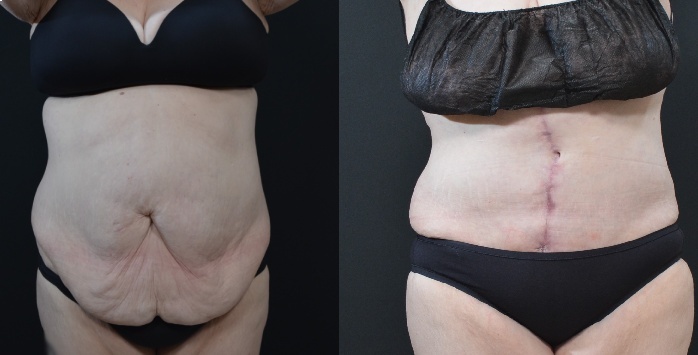
Who Is a Good Candidate for Liposuction?
Contrary to popular belief, liposuction is not a weight loss procedure. It is a great option to target localized deposits of fat. Many women choose liposuction after pregnancy, weight changes, or with age to restore confidence in their shape.
You may be an ideal candidate if you:
- Are in good overall health
- Are within 10–20 pounds of your goal weight
- Have localized fat resistant to exercise or diet
- Have good skin elasticity (or are open to combining with Renuvion or a lift)
- Want proportion, not perfection
How Much Does Liposuction Cost in Portland?
Pricing varies depending on:
- Number of areas treated
- Inclusion of fat transfer or Renuvion
- Complexity of the surgical plan
- Anesthesia and facility fees
During your consultation, you’ll receive a personalized, transparent quote. Financing options are available. Please visit our pricing page for a ballpark estimate.
Hetal Fichadia MD, FACS
Double Board-Certified Plastic Surgeon in Portland, OR
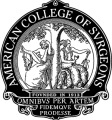



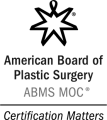
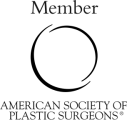

Liposuction Recovery
Recovery timeline
Recovery is often smoother than patients expect. Dr. Fichadia provides clear instructions, follow-ups, and support throughout. When Renuvion is added, many patients notice additional tightening as collagen remodeling continues over 6 months.
Days 1–3
Swelling, bruising, and soreness most noticeable; compression garment worn.
Weeks 1–2
Return to desk work or light activity; bruising fades.
Weeks 3–4
Swelling decreases; early results appear; light exercise resumes.
Weeks 6–8
Cleared for full activity; contours smooth out.
Months 3–6
Final results emerge as tissues settle and skin adjusts.
Liposuction Maintenance
Fat cells removed with liposuction are gone permanently. However, maintaining your results depends on lifestyle. Women who sustain a stable weight, healthy nutrition, and consistent activity enjoy their results for years.
Maintenance options may include:
- Renuvion or other skin-tightening treatments for minor laxity
- Non-surgical options for ongoing contour refinement
- Skincare and wellness support for overall body confidence
Take the Next Step Toward Refined Confidence
If you’re ready to eliminate stubborn fat and refine your contours, liposuction with Dr. Hetal Fichadia can help you feel more at home in your body. Serving women across Portland, Lake Oswego, Tigard, Beaverton, and beyond, Dr. Fichadia delivers advanced techniques, natural results, and compassionate care.
Call (503) 488-2344 or schedule your consultation online today.
Liposuction Portland, OR – FAQs
Is liposuction a weight-loss procedure?
No. It’s for contouring, not weight loss. Best results are seen in women already near their healthy weight.
Will fat return after liposuction?
Fat cells removed are gone permanently. Remaining fat cells can enlarge if weight is gained. Stable lifestyle habits support lasting results.
Can liposuction tighten loose skin?
On its own, no. When skin laxity is present, Dr. Fichadia may add Renuvion or recommend a lift procedure.
How visible are the scars?
Incisions are just a few millimeters and placed discreetly. With proper care, they fade to nearly invisible.
What’s the difference between liposuction and a tummy tuck?
Liposuction removes fat only. A tummy tuck also removes excess skin and repairs stretched muscles. Many women choose both for complete abdominal rejuvenation.
Can fat be reused elsewhere?
Yes. Purified fat can be transferred to the breasts, buttocks, or face for natural enhancement.
Which areas respond best to liposuction?
Abdomen, flanks, thighs, arms, chin, and back are most common. Skin with good elasticity responds best.
Is recovery painful?
Most women describe it as soreness like a hard workout. Discomfort is well controlled with medication.
Am I too old for liposuction?
There’s no strict age limit. Health, skin quality, and goals matter more. Women in their 50s and 60s often achieve excellent results.
How long do results last?
Results are long-lasting with stable weight and healthy habits, often for decades.